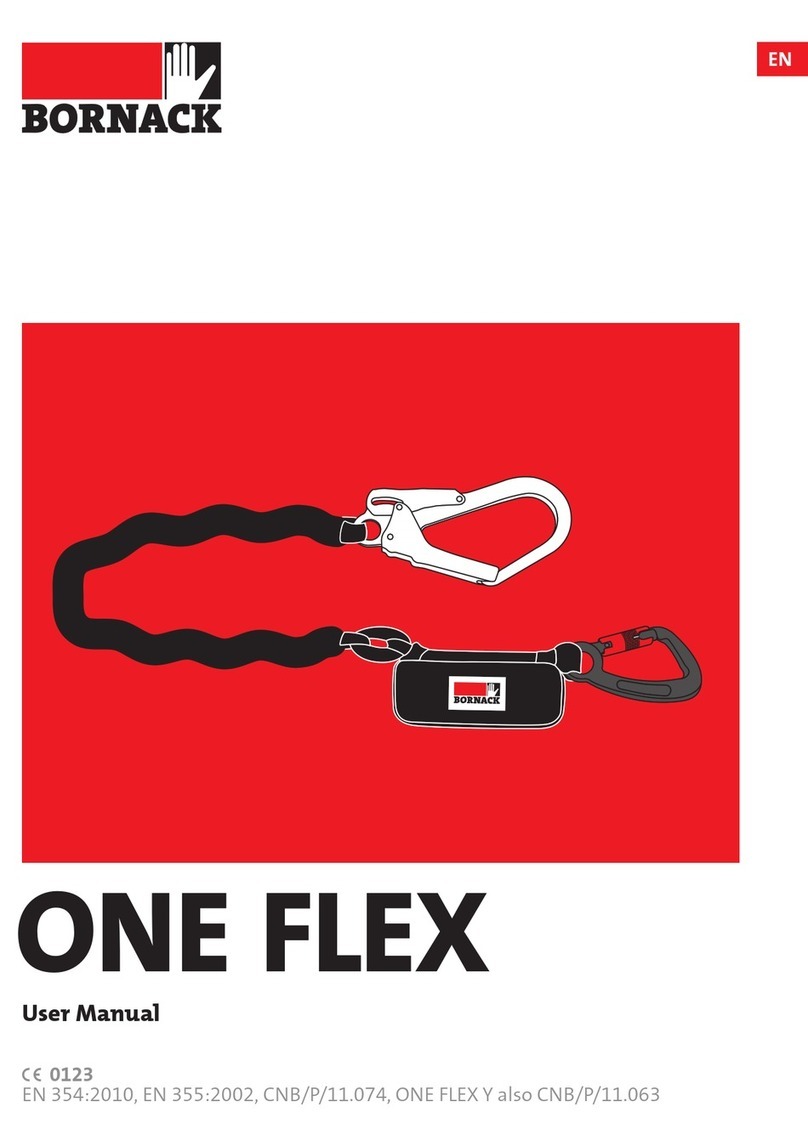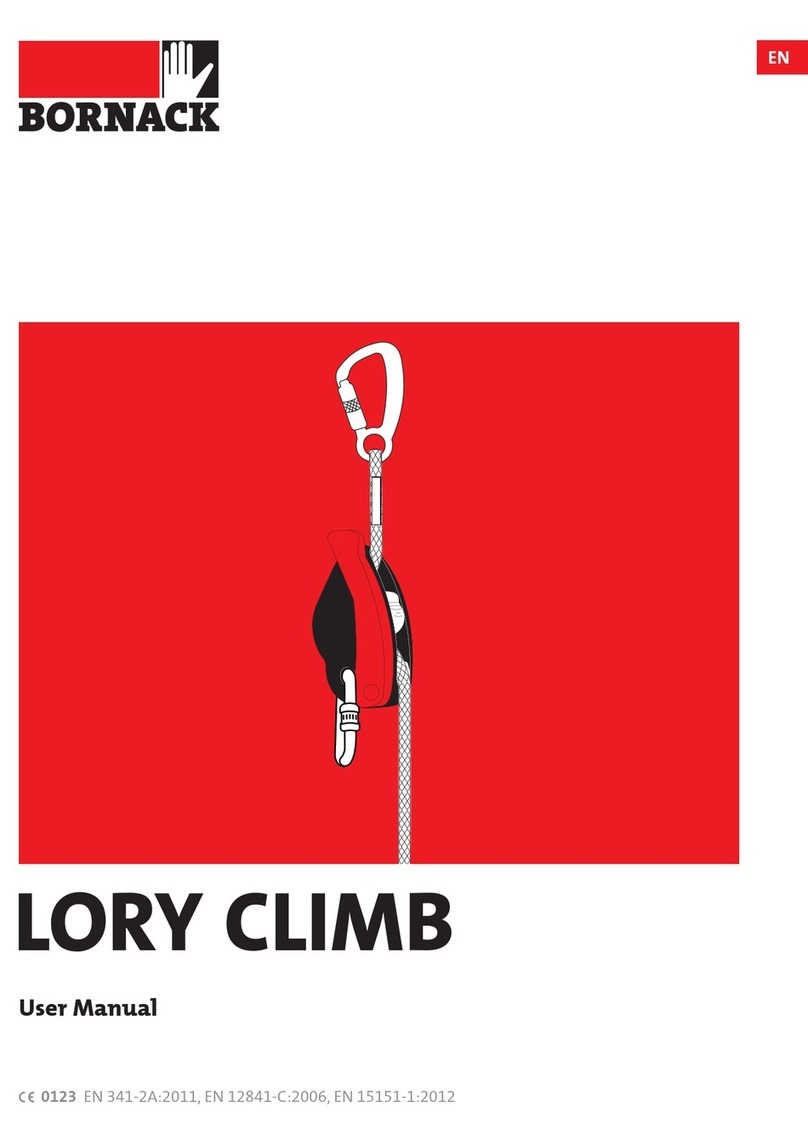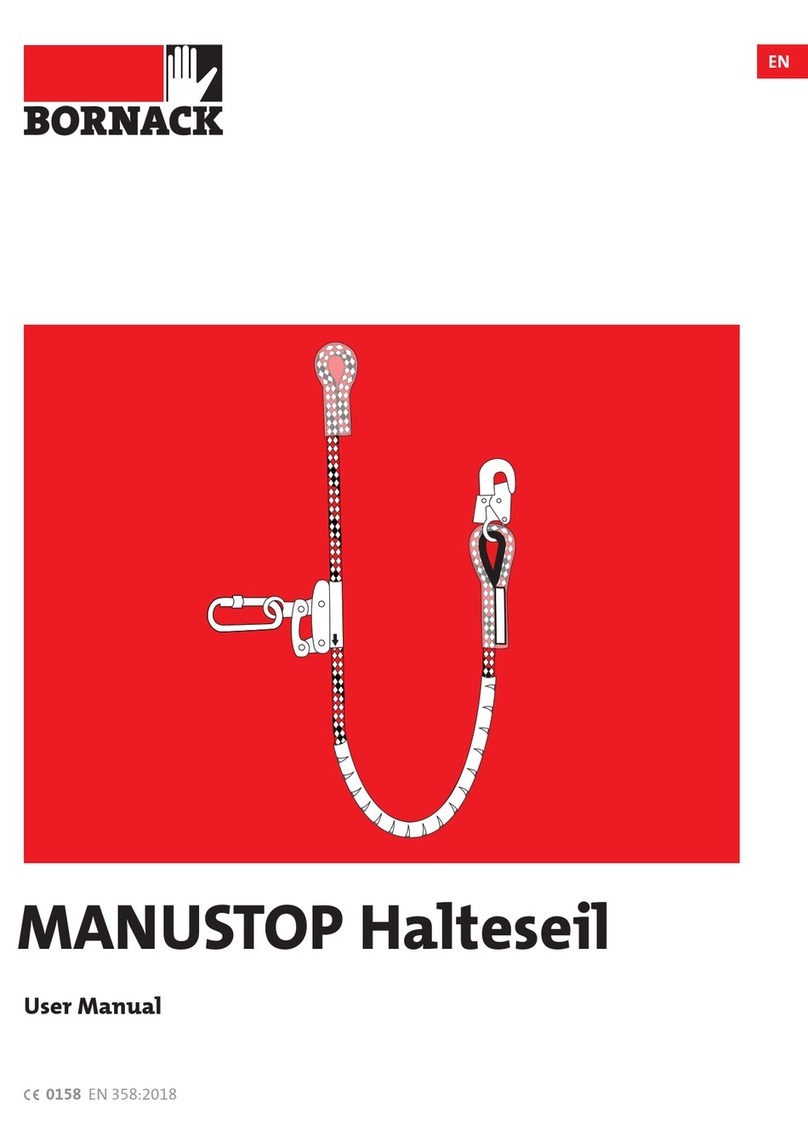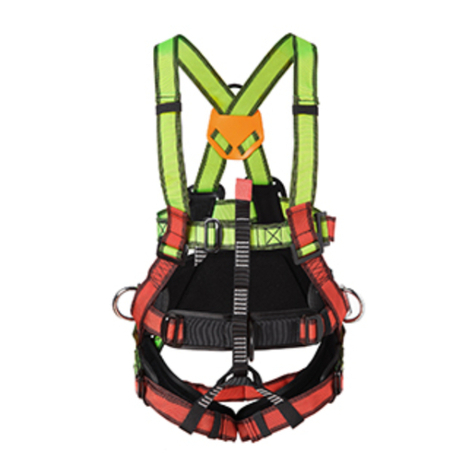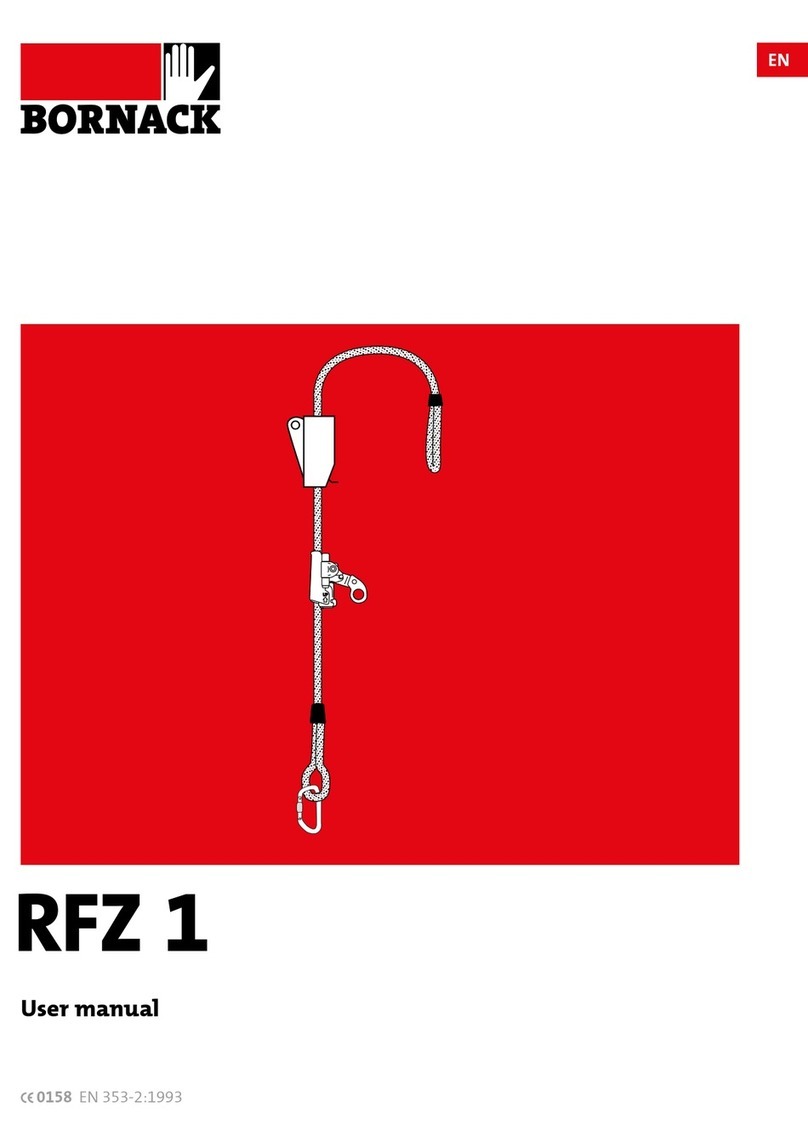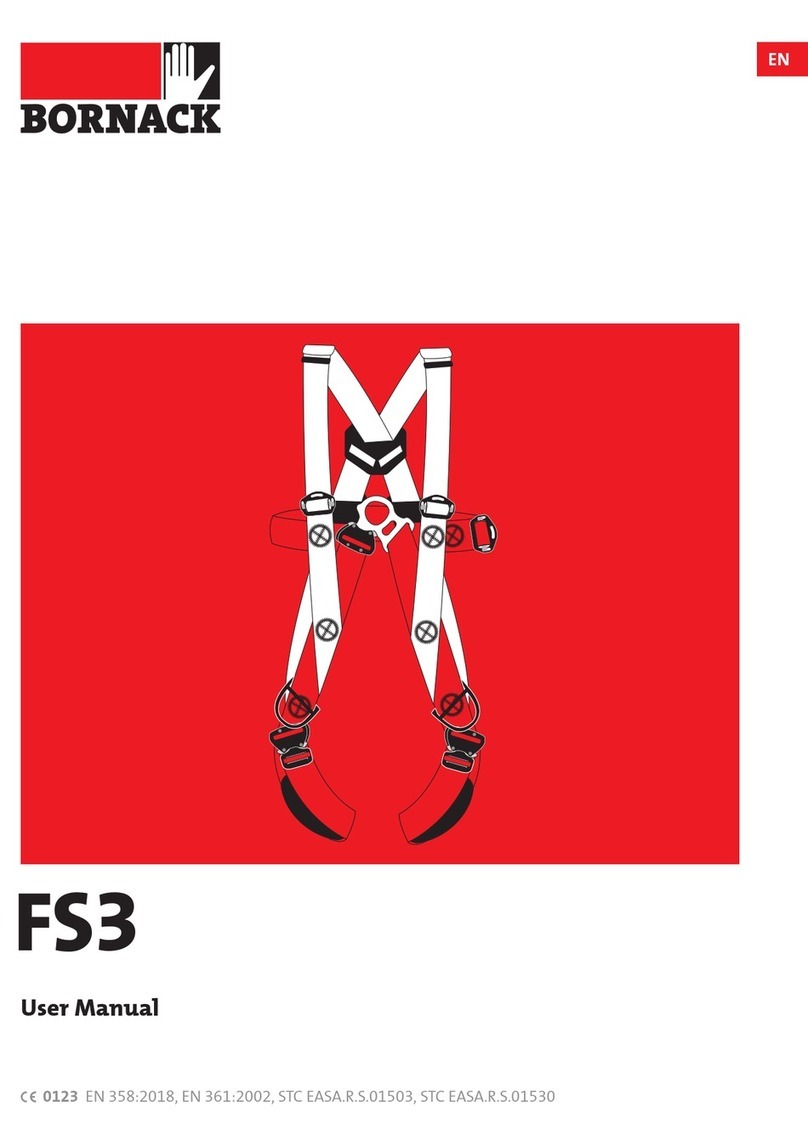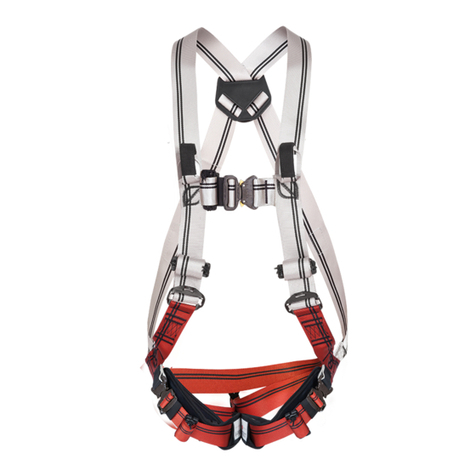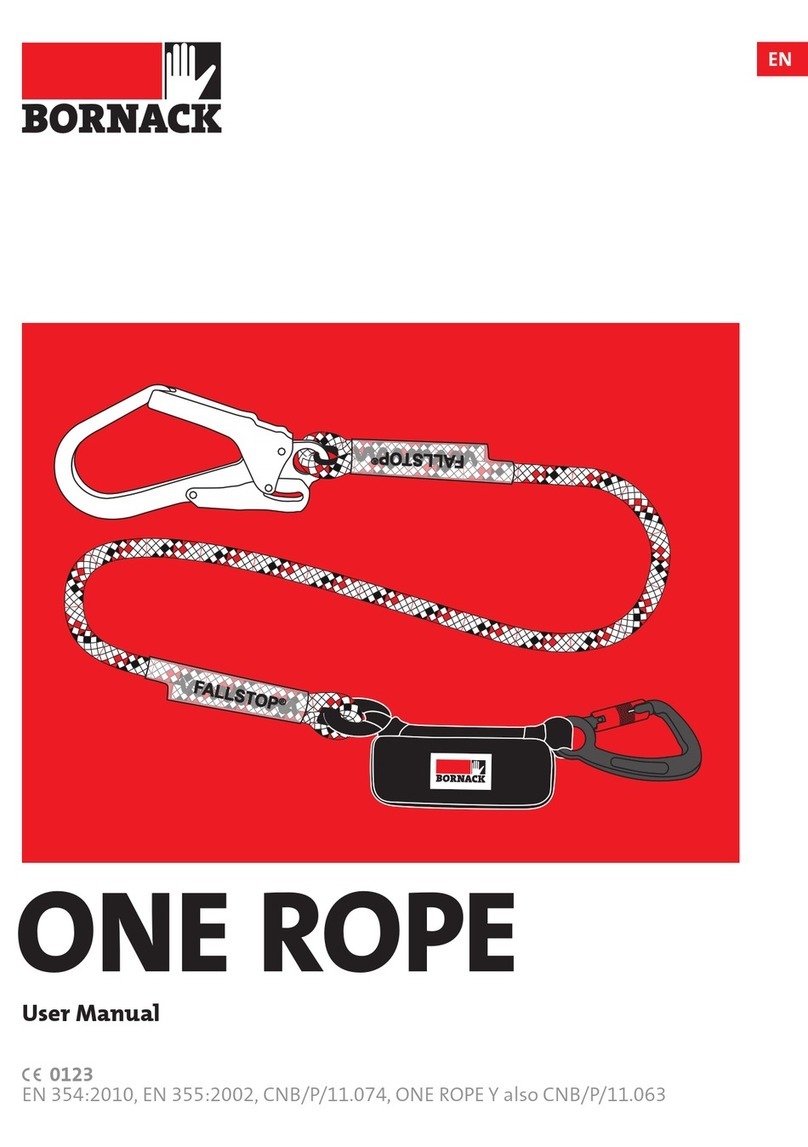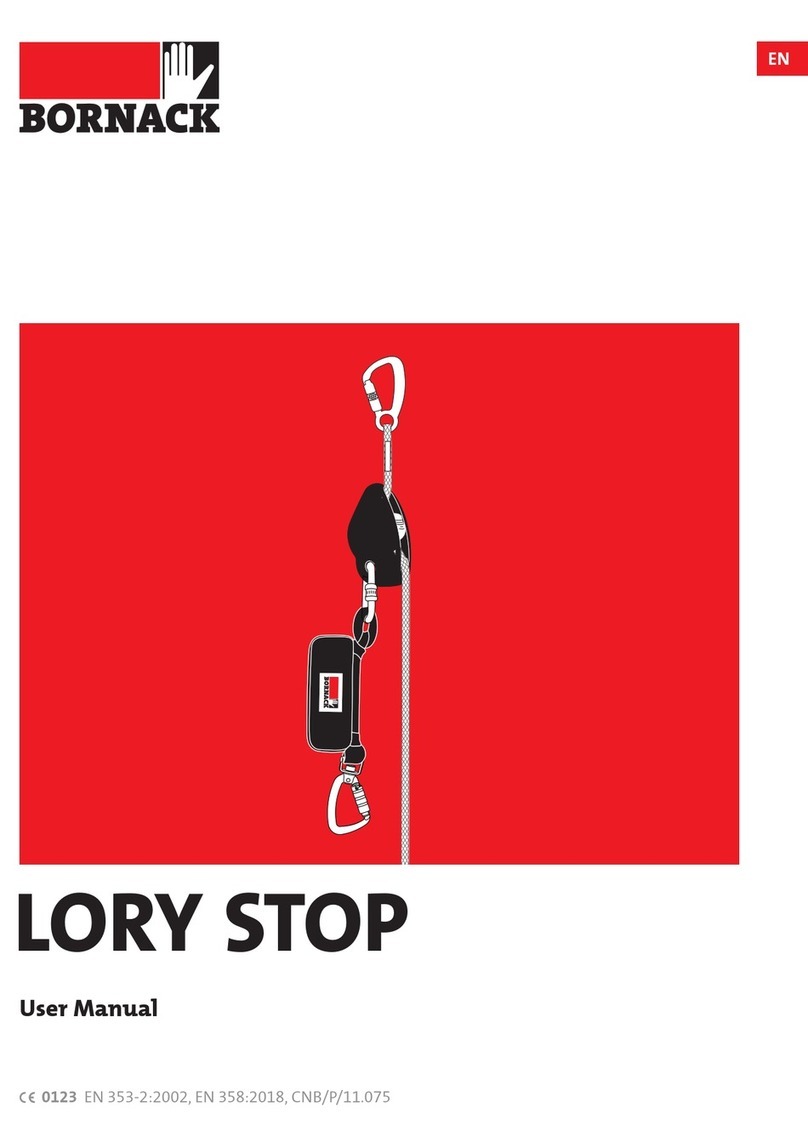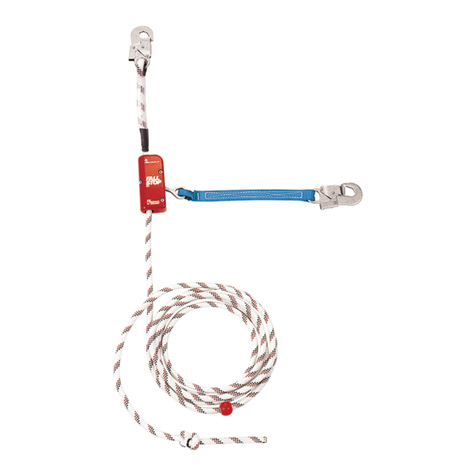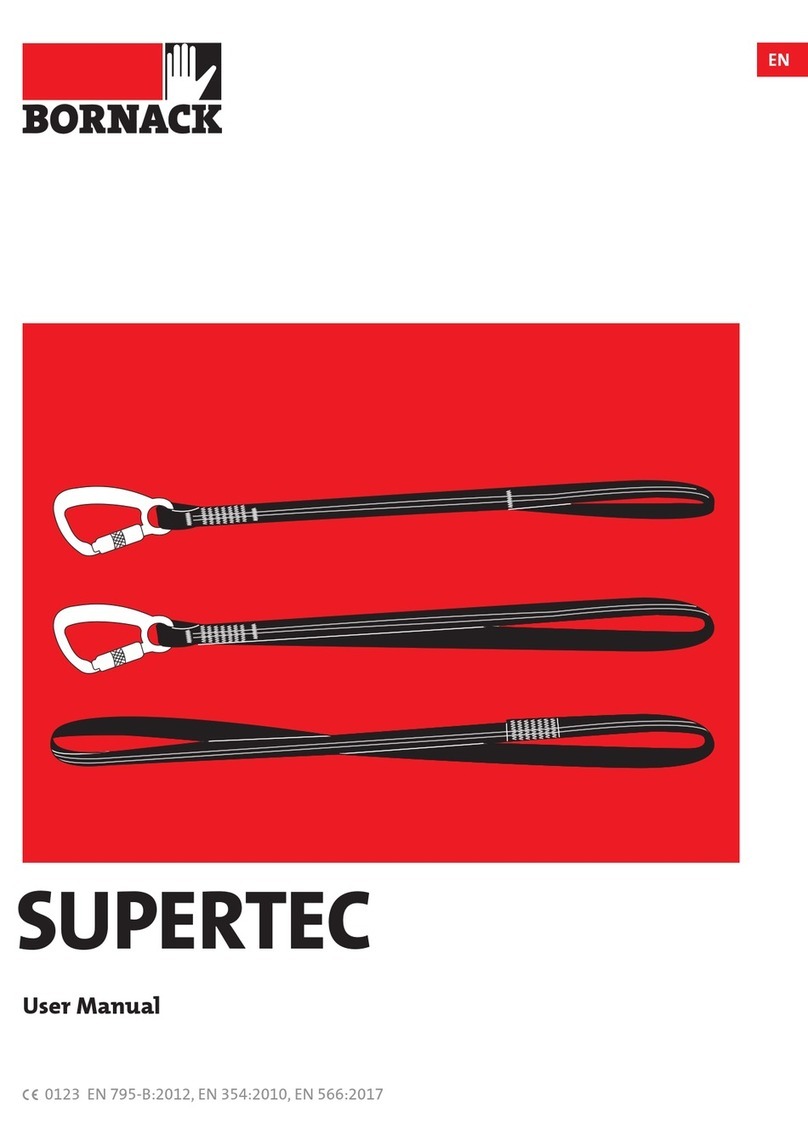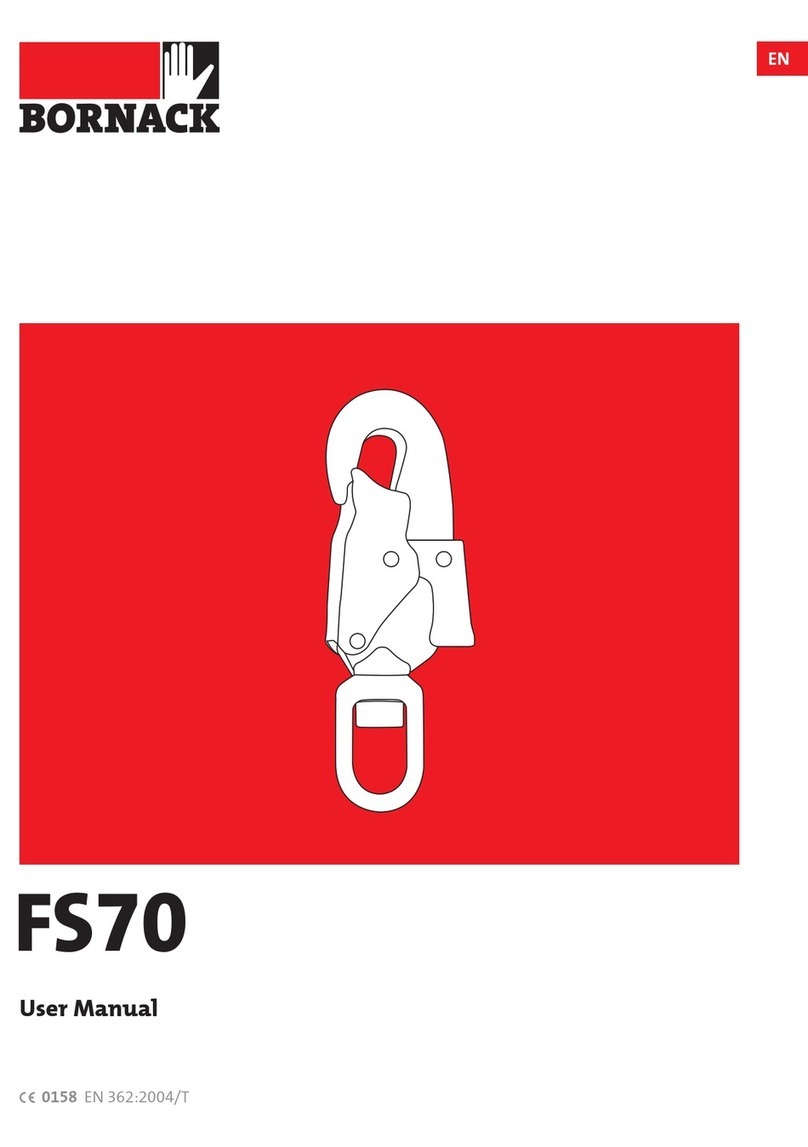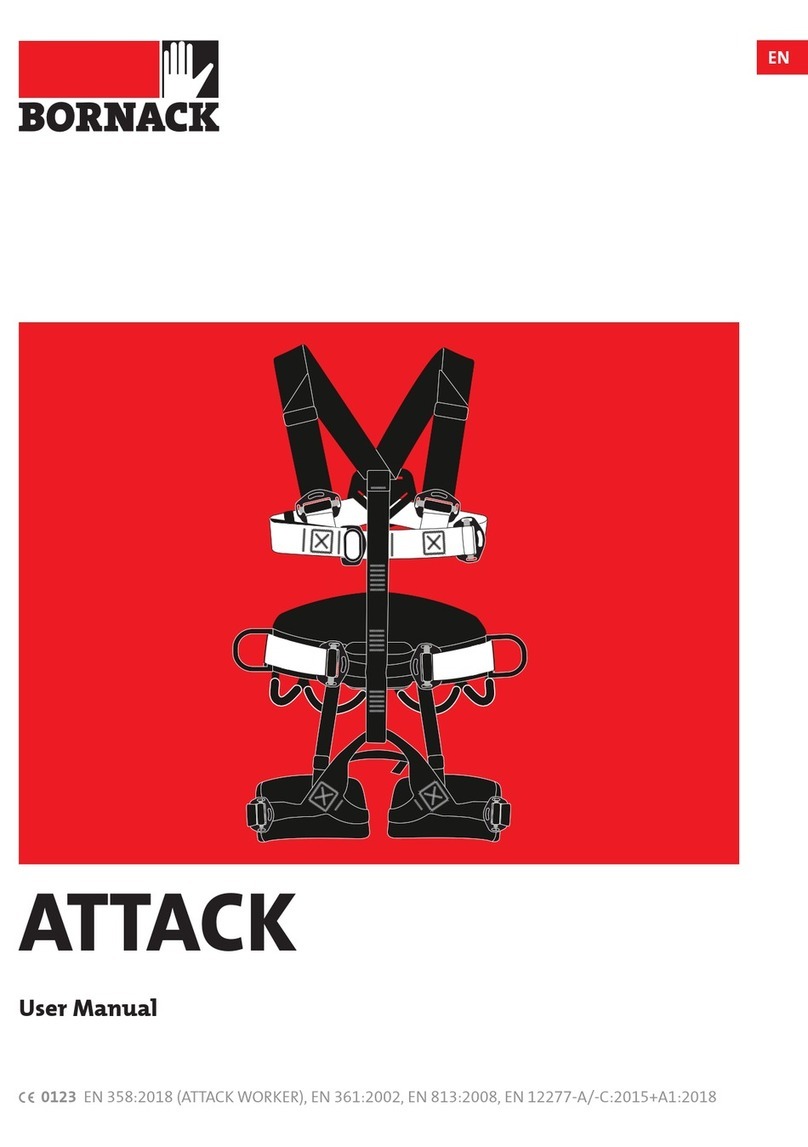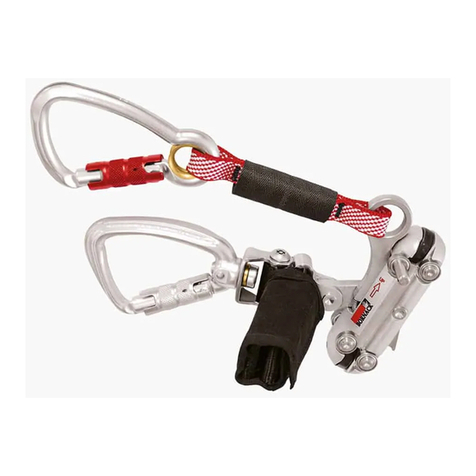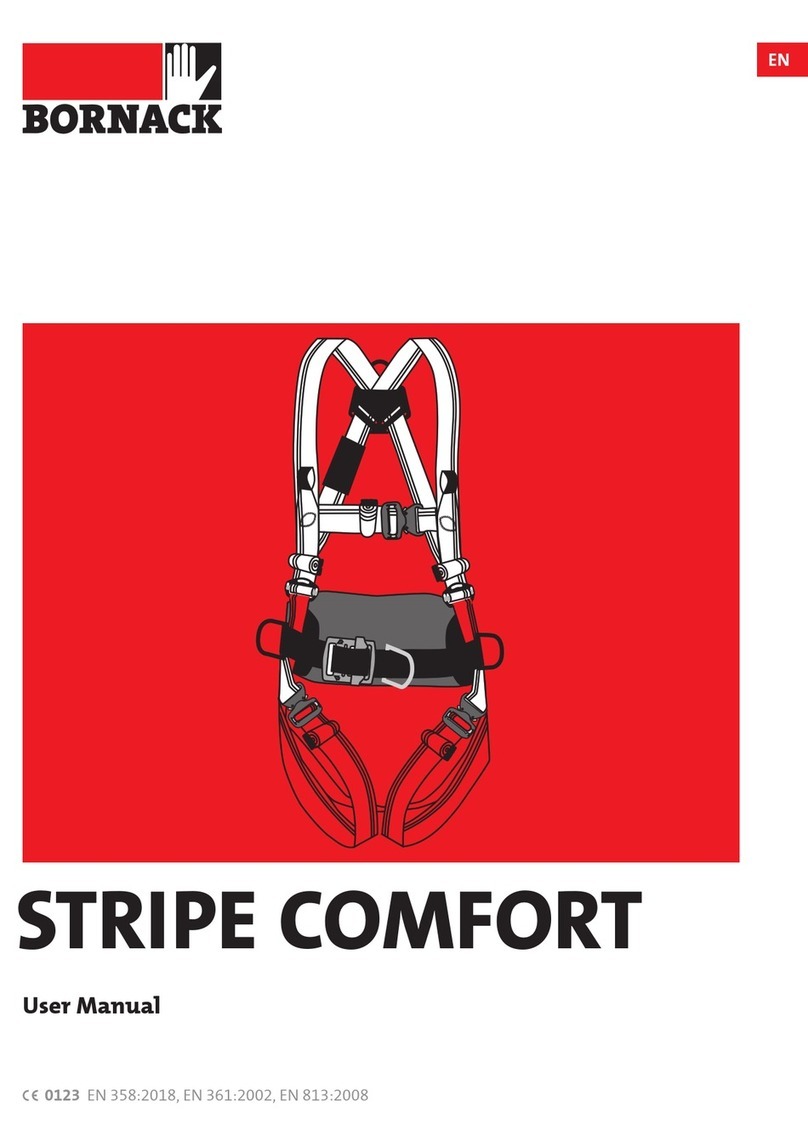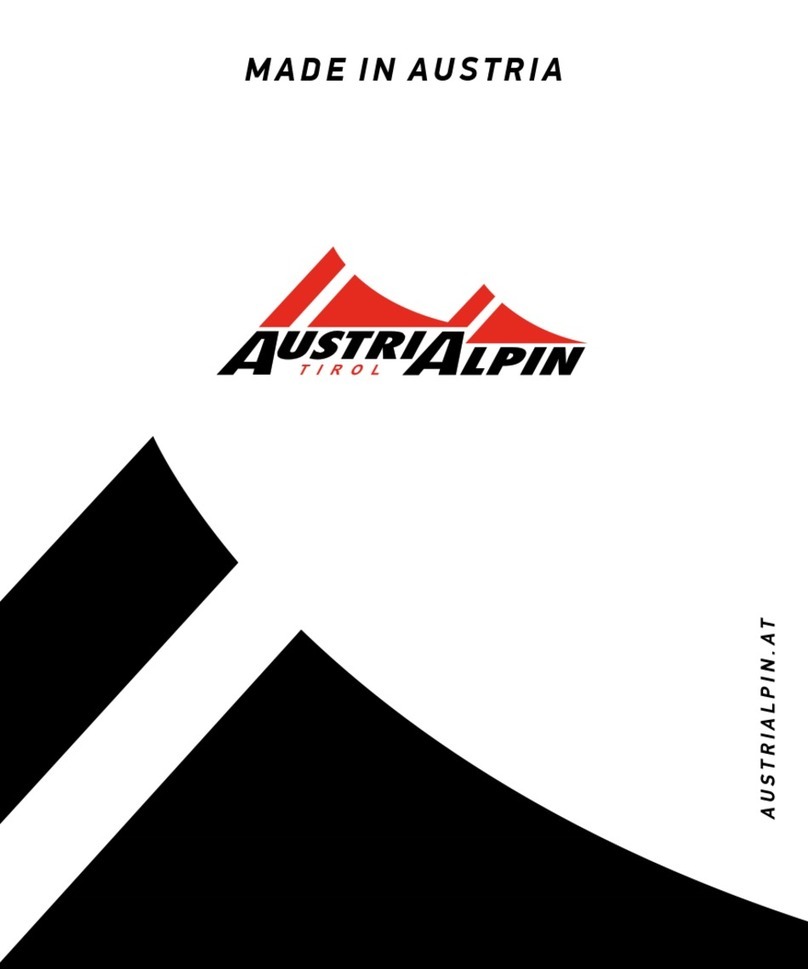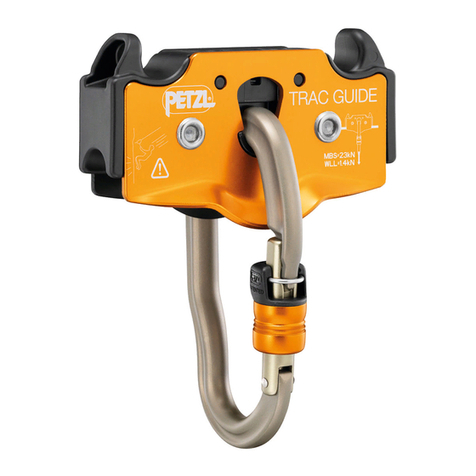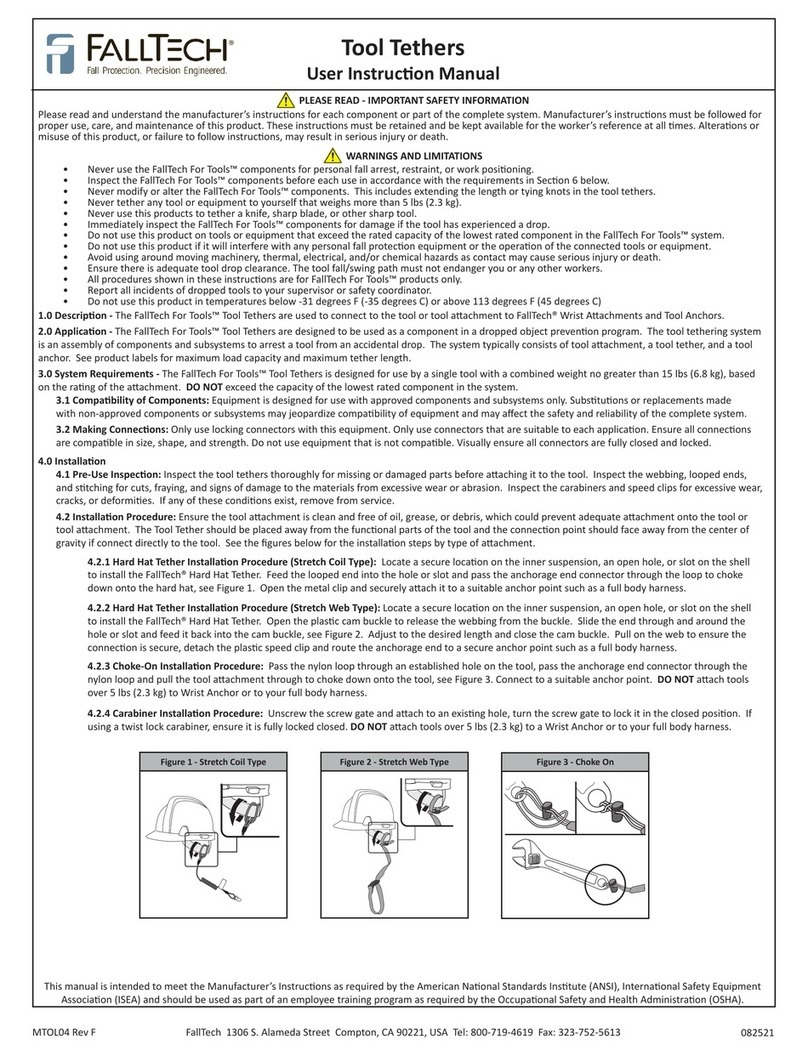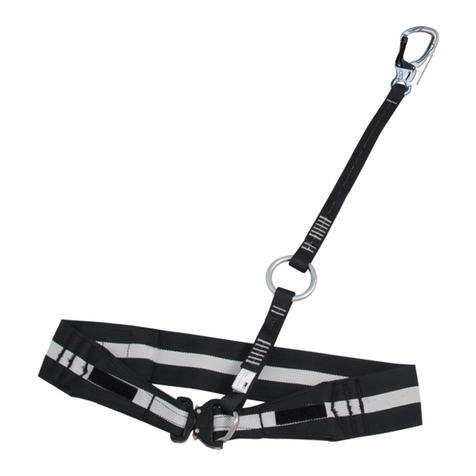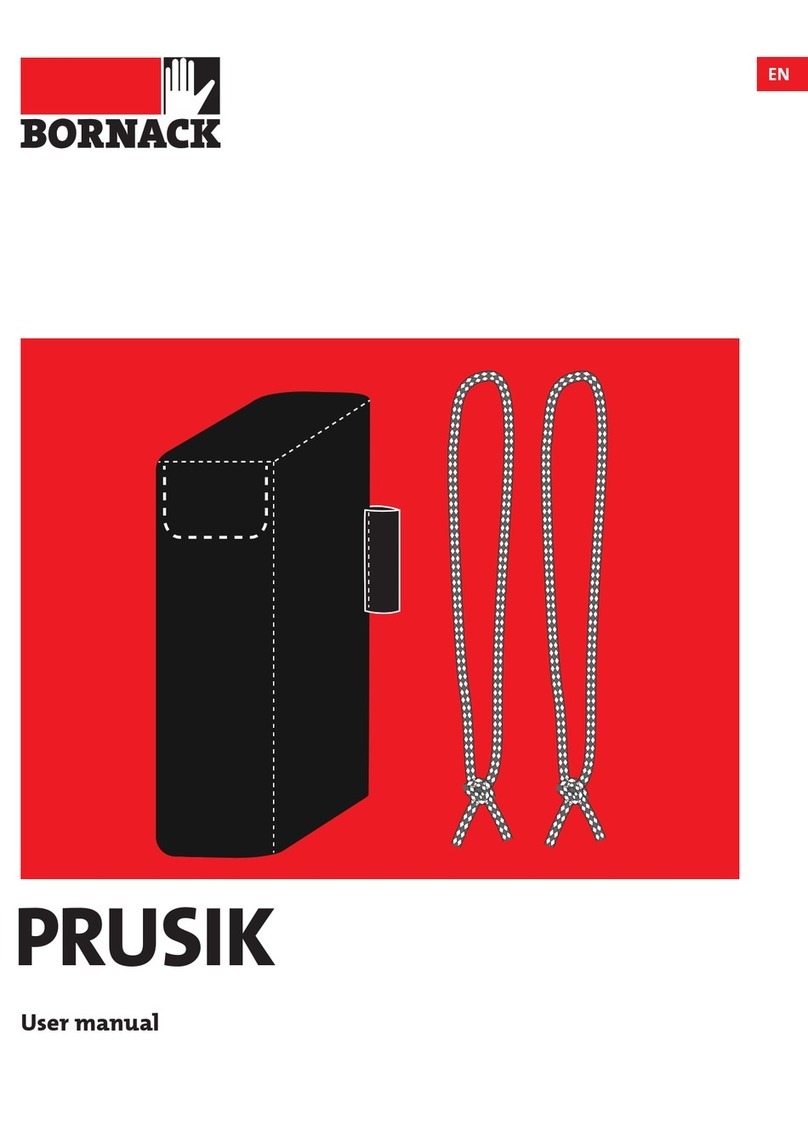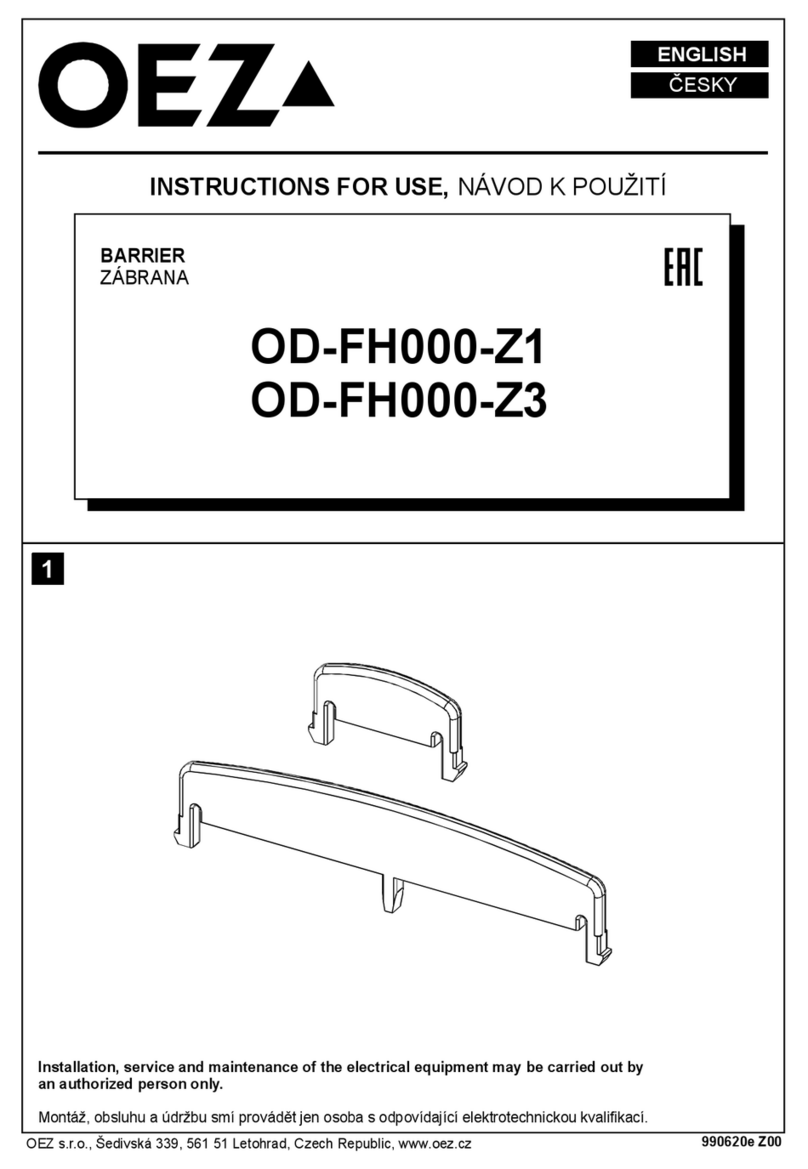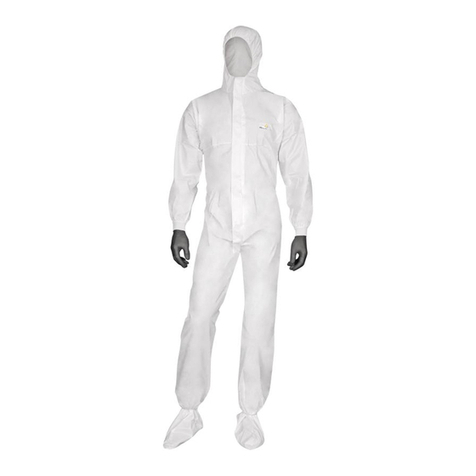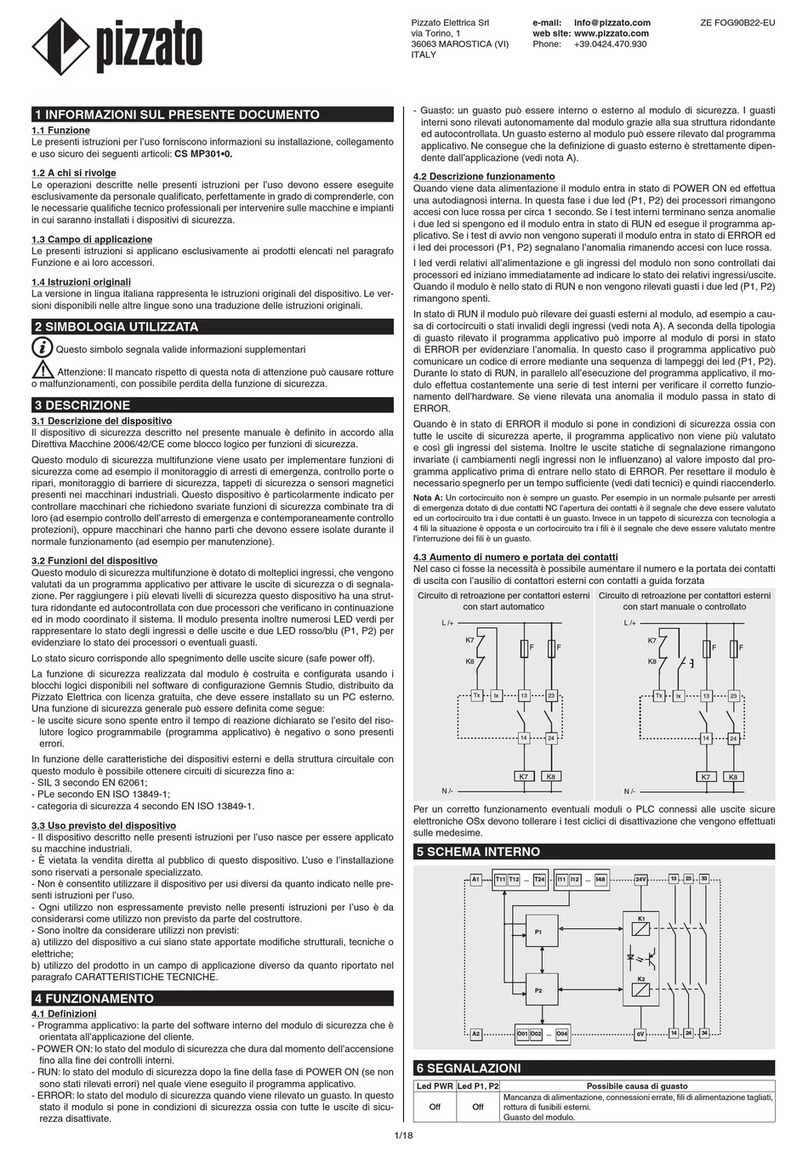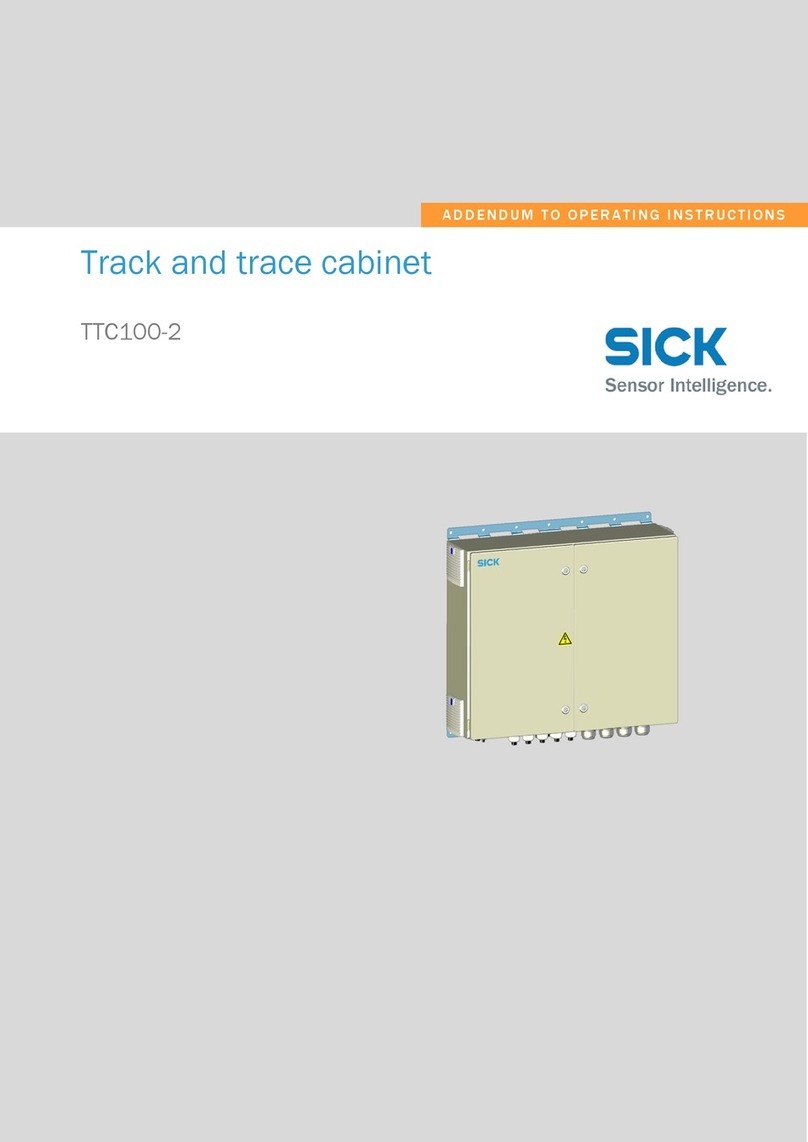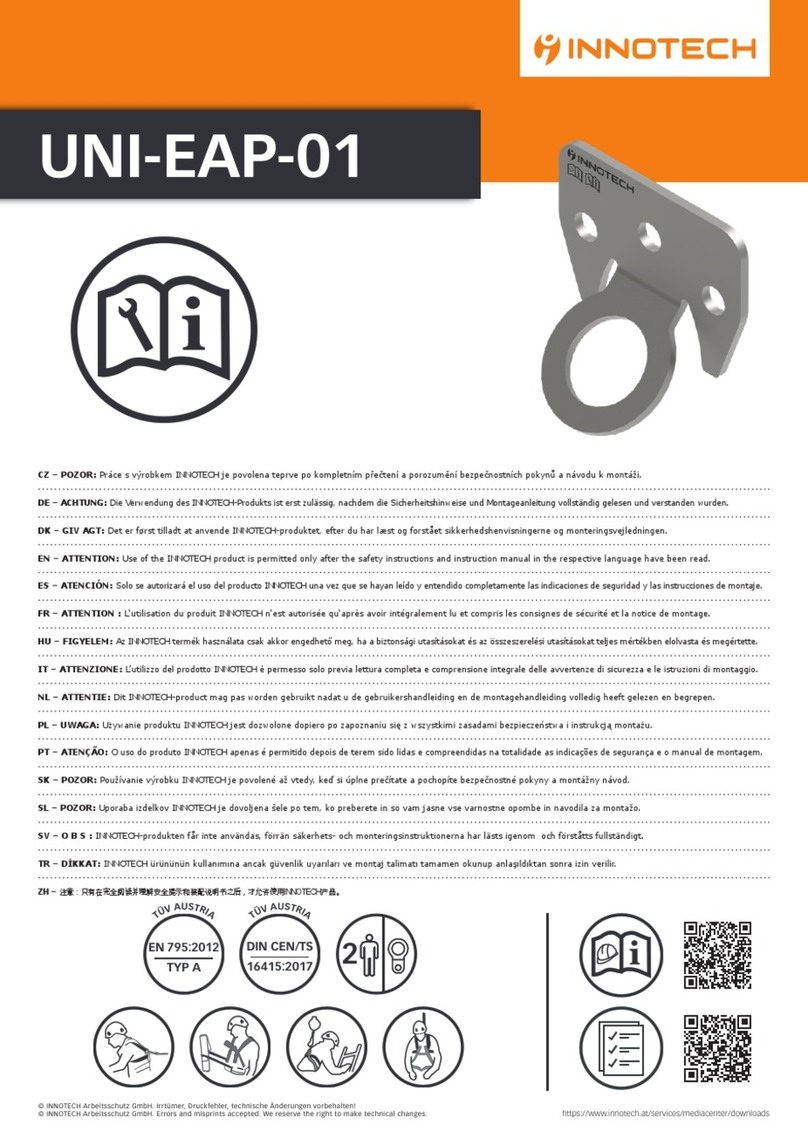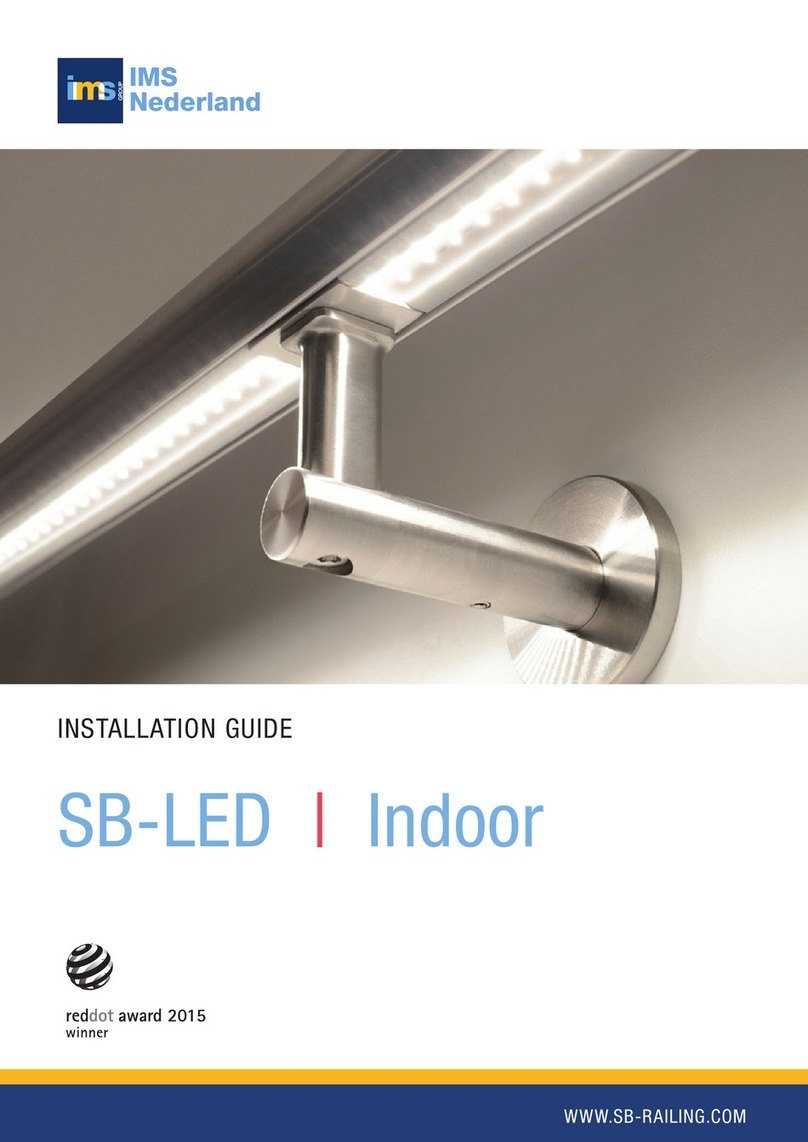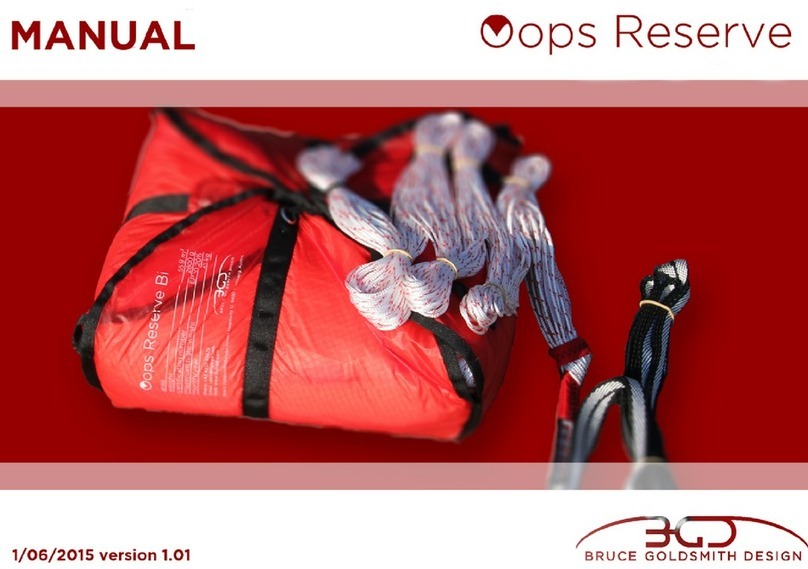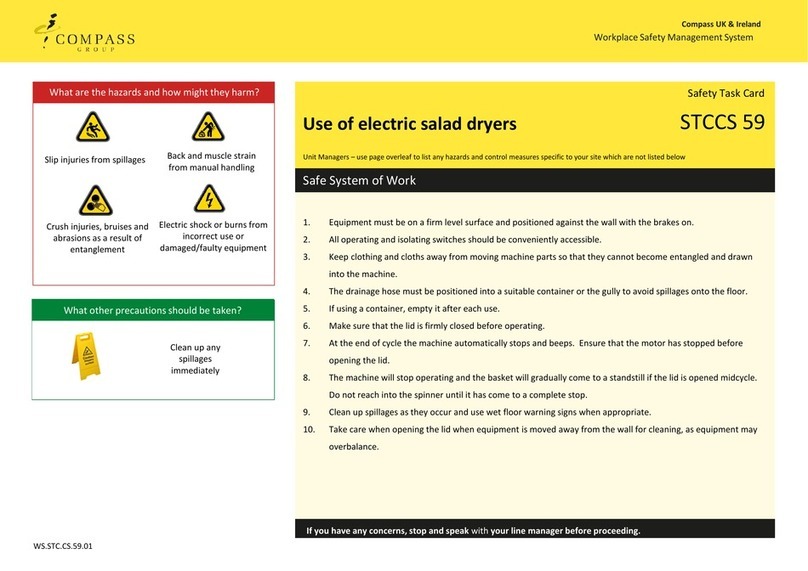
|
SAFETY INSTRUCTIONS
There is a risk of life-threatening injuries if the
safety instructions are not observed.
• If even the slightest of faults is detected
during the inspection, the personal protective
equipment may not be used.
• Damaged, fall-stressed, dubious personal
protective equipment or safety devices must
be immediately withdrawn and not used. The
equipment may only be inspected by an
expert or the manufacturer. This must be
entered into the test card.
• No independent changes or repairs may be
carried out.
• The rope protection system is part of the
personal protective equipment and should be
assigned to a specific person.
• This personal protective equipment may only
be used by trained and experienced persons
or under appropriate supervision.
• Trained and experienced persons within the
meaning of this GAL must be familiar with
handling PPE against falls from heights, their
correct use, application limits, possible risks,
ways of avoiding these risks and they must
also know the rescue plan.
• In accordance with the accident prevention
guidelines (UVV), the users of fall protective
equipment (Category III) must attend a
theoretical training course and a practical
training course. Make use of the training
competence of the BORNACK training centres:
• Before using for the first time, in particular
when introducing the IRS system for the first
time in a fire service, in-depth briefing of
multipliers / fire service members of the
respective fire services by BORNACK or
training centres authorised by BORNACK is
necessary.
• The in-depth briefing of multipliers / fire
service members requires at least training
sessions.
• Accessories from other manufacturers may
only be used if approved by BORNACK and
may not impair the function and safety of the
protective equipment.
• Clothing and shoes must be suitable for the
task at hand and the weather conditions.
• The minimum protective equipment
according to FWDV chapter . must be
worn.
• Only use if you are fully fit.
• Health impairments can impact on the safety
of the user when working at heights or
depths.
• The anchor point for the rope protection must
be adequately strong (EN ) and positioned
correctly. If possible select an anchor point
above head.
• If in an emergency of for tactical reasons no
EN -conform anchor point is available, a
suitable, adequately strong anchor point can
be selected in the basis of a fast local risk
assessment.
• This PPE is has not been tested for horizontal
use.
• Edge loads always pose a risk.
• Select an anchor that is as high as possible.
• Protect personal protective equipment during
storing, use and transportation against the
eects of heat (e.g. welding flames or sparks,
burning cigarettes) and chemicals (e.g. acids,
alkalis, oils) and mechanical eects (e.g. sharp
edges).






















